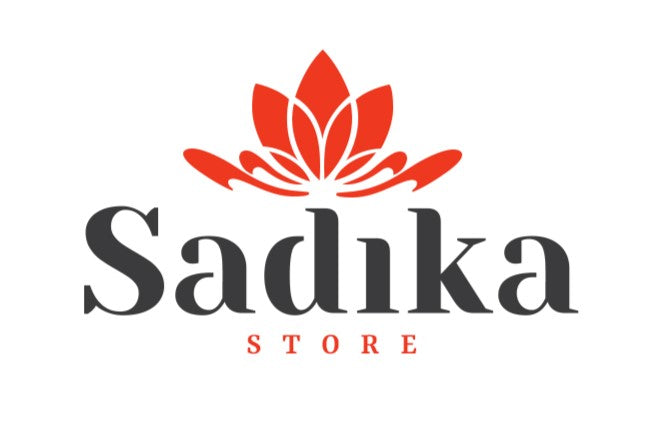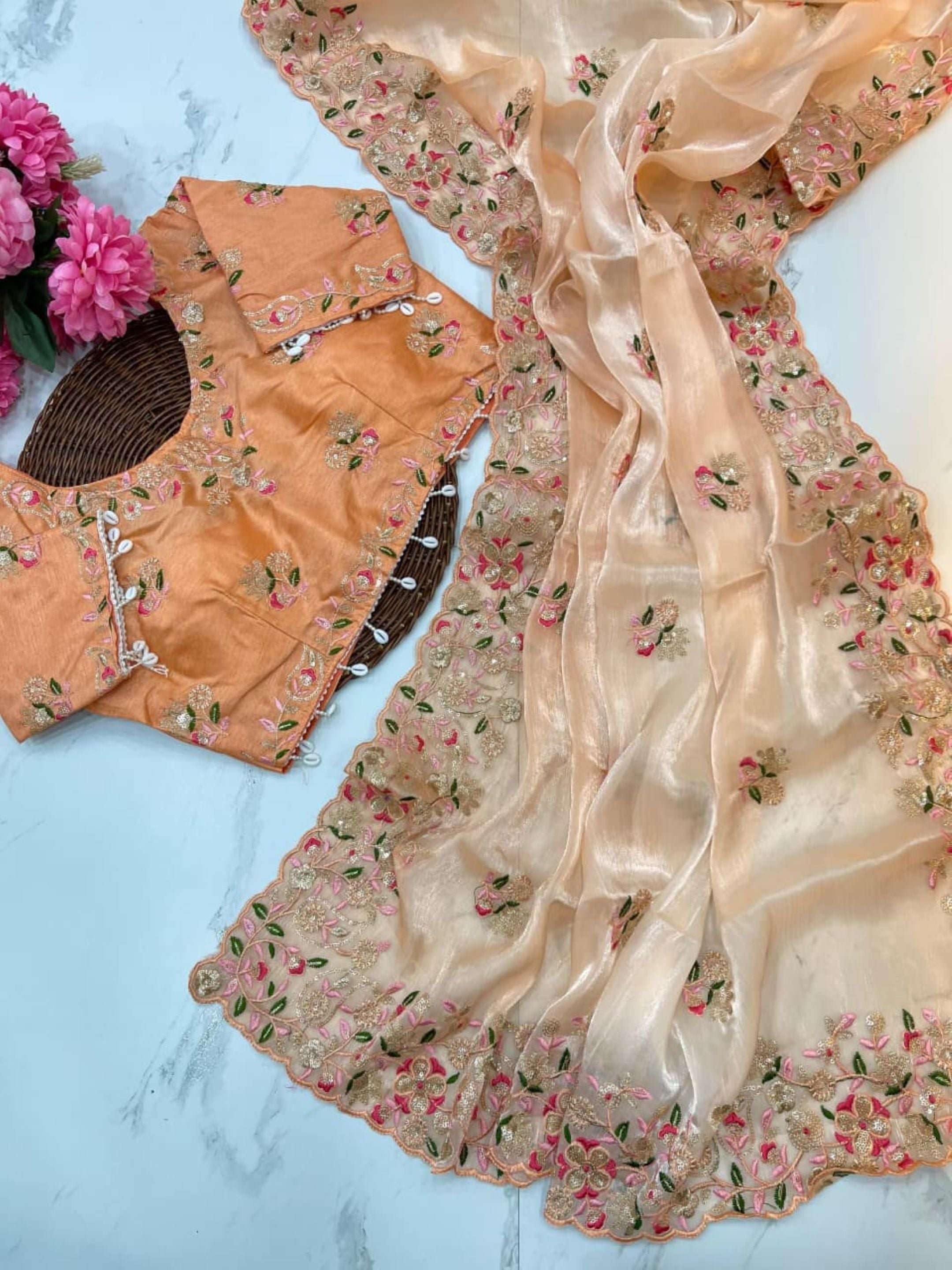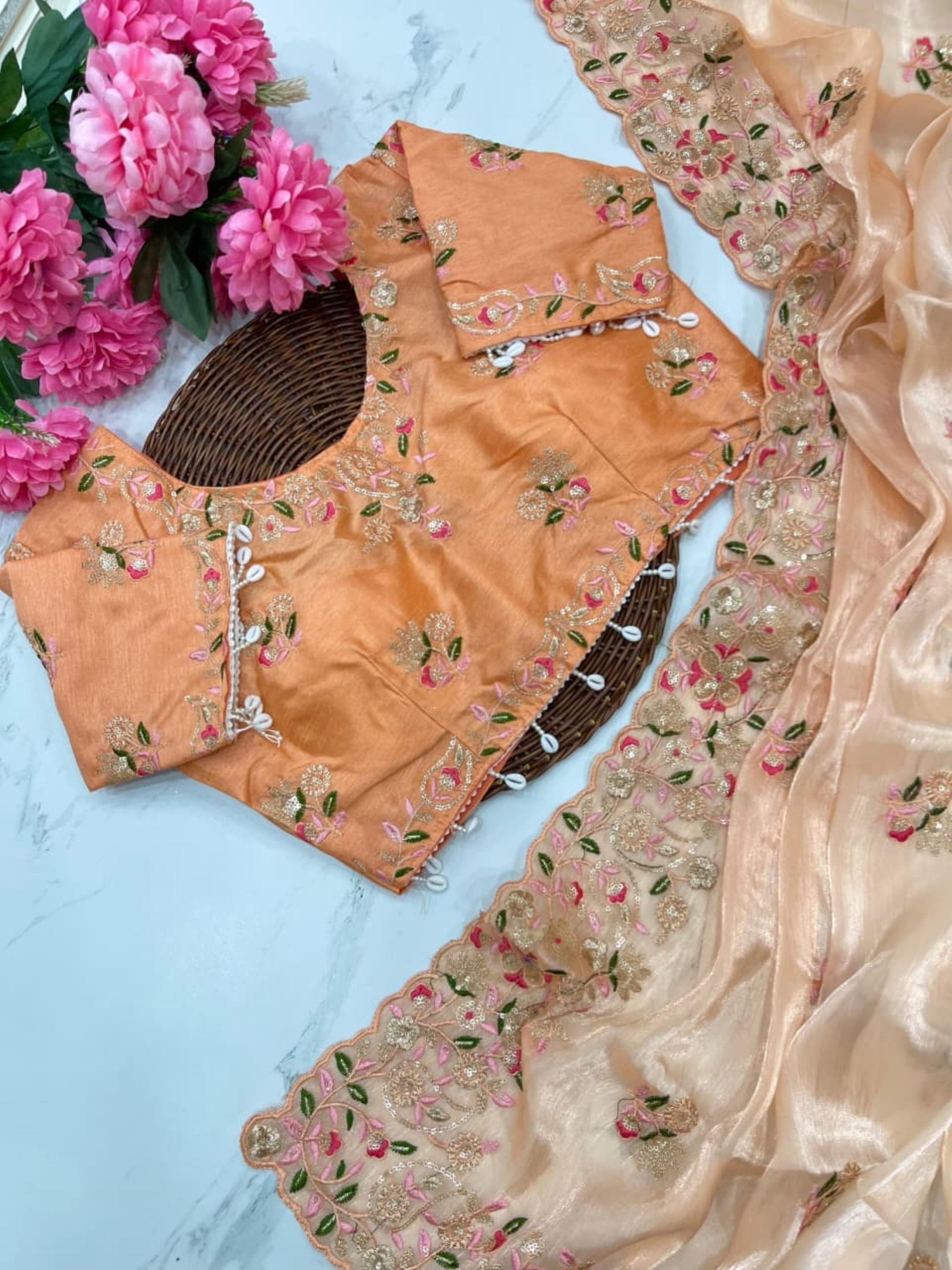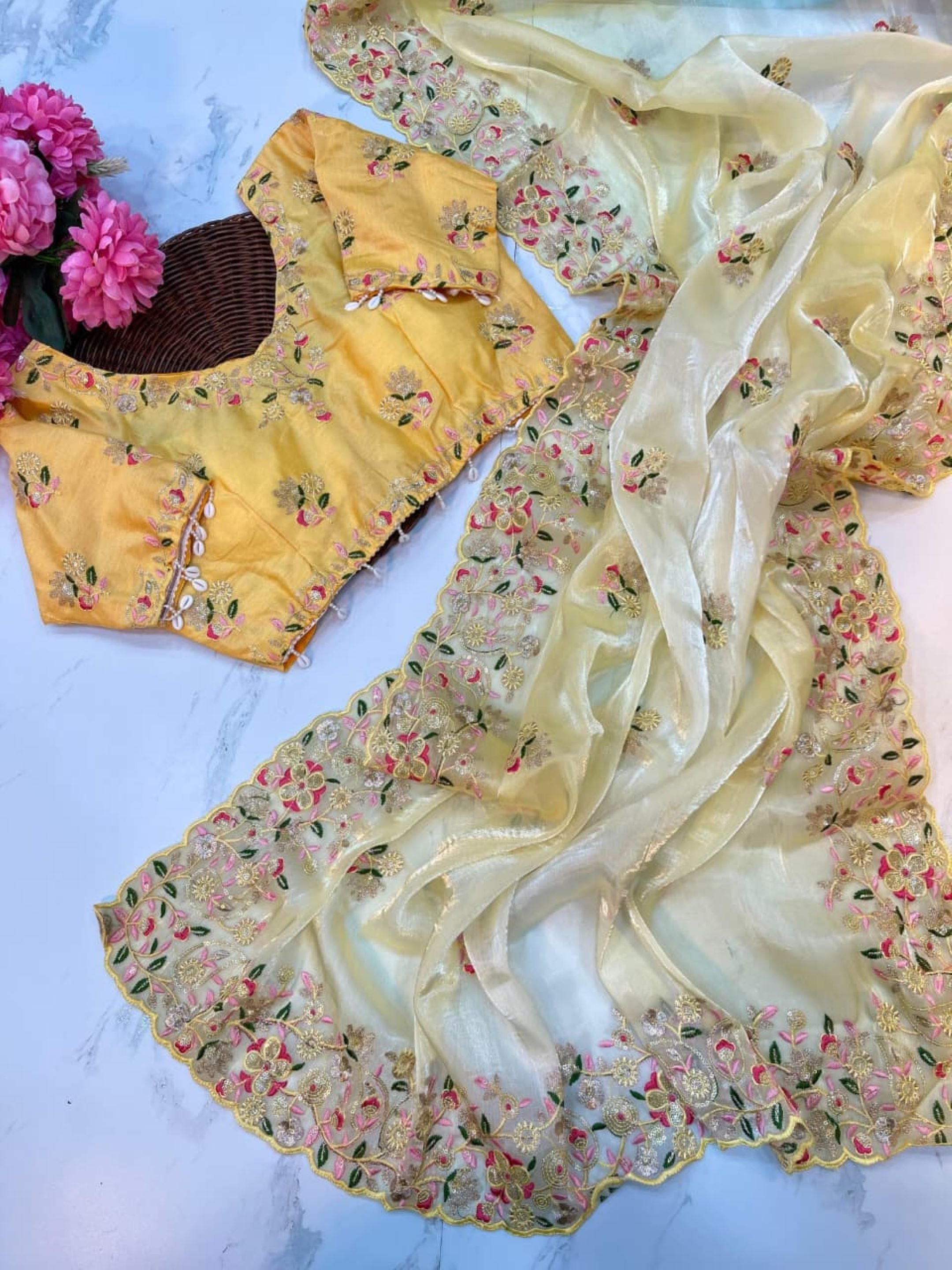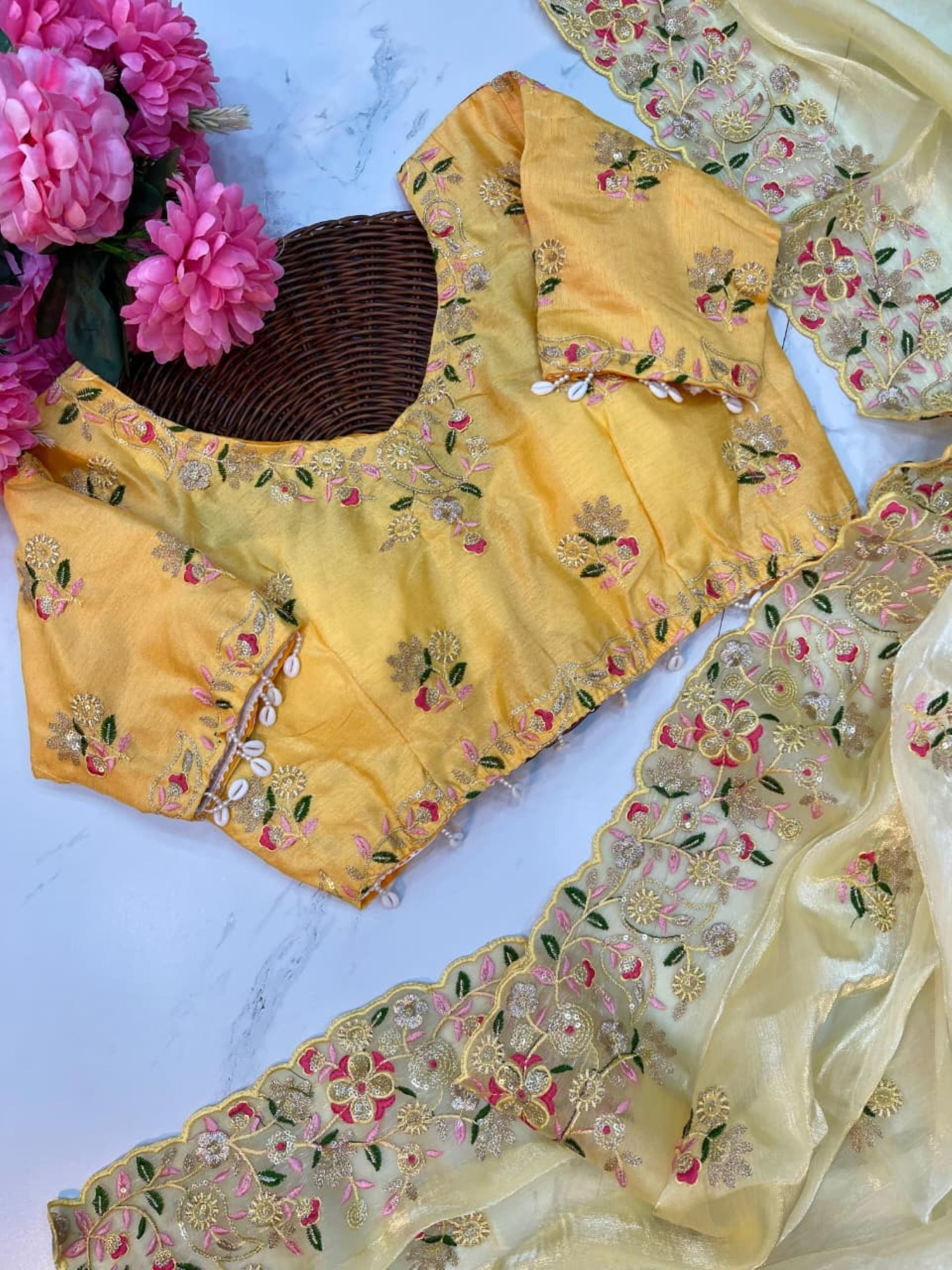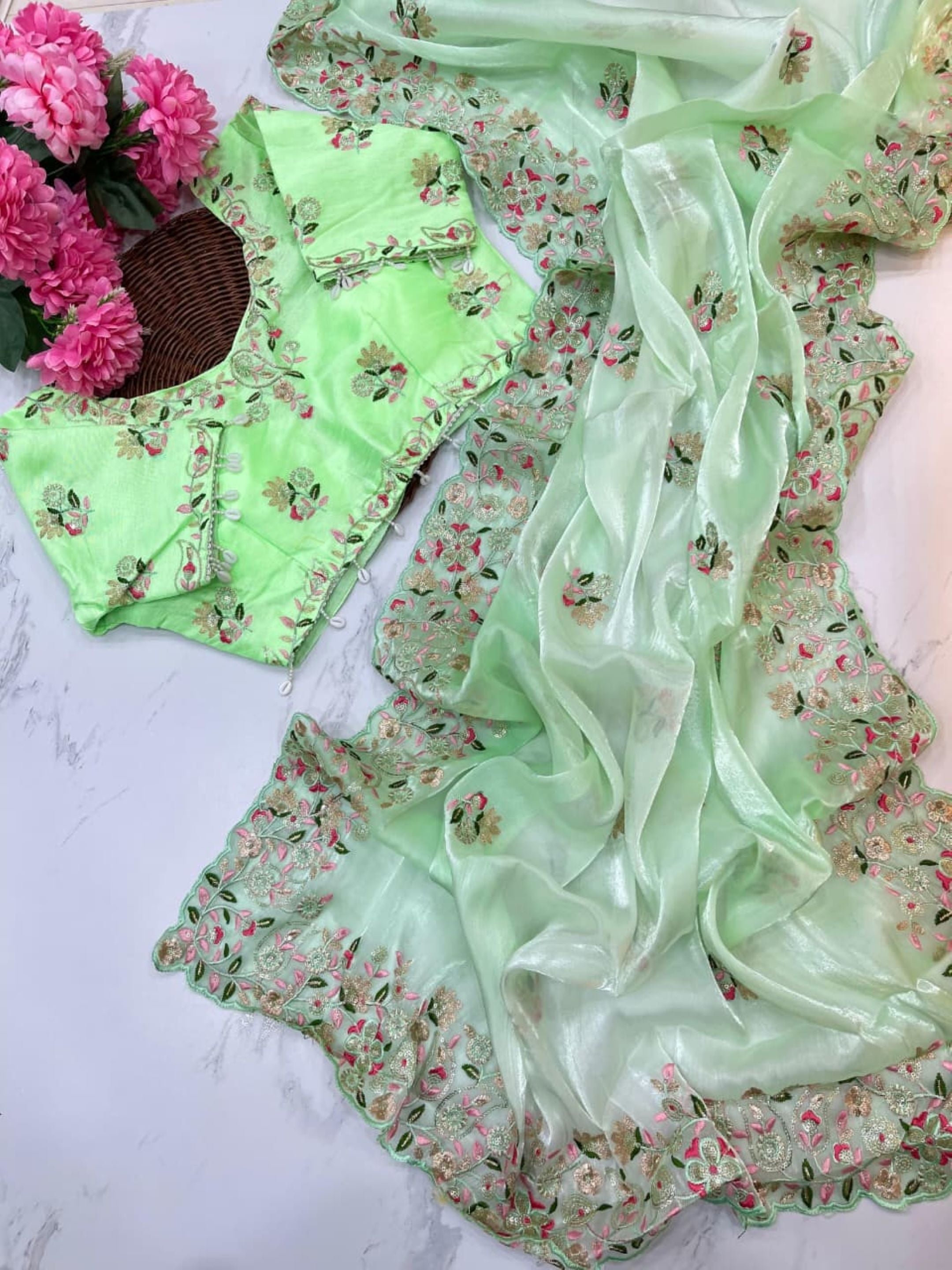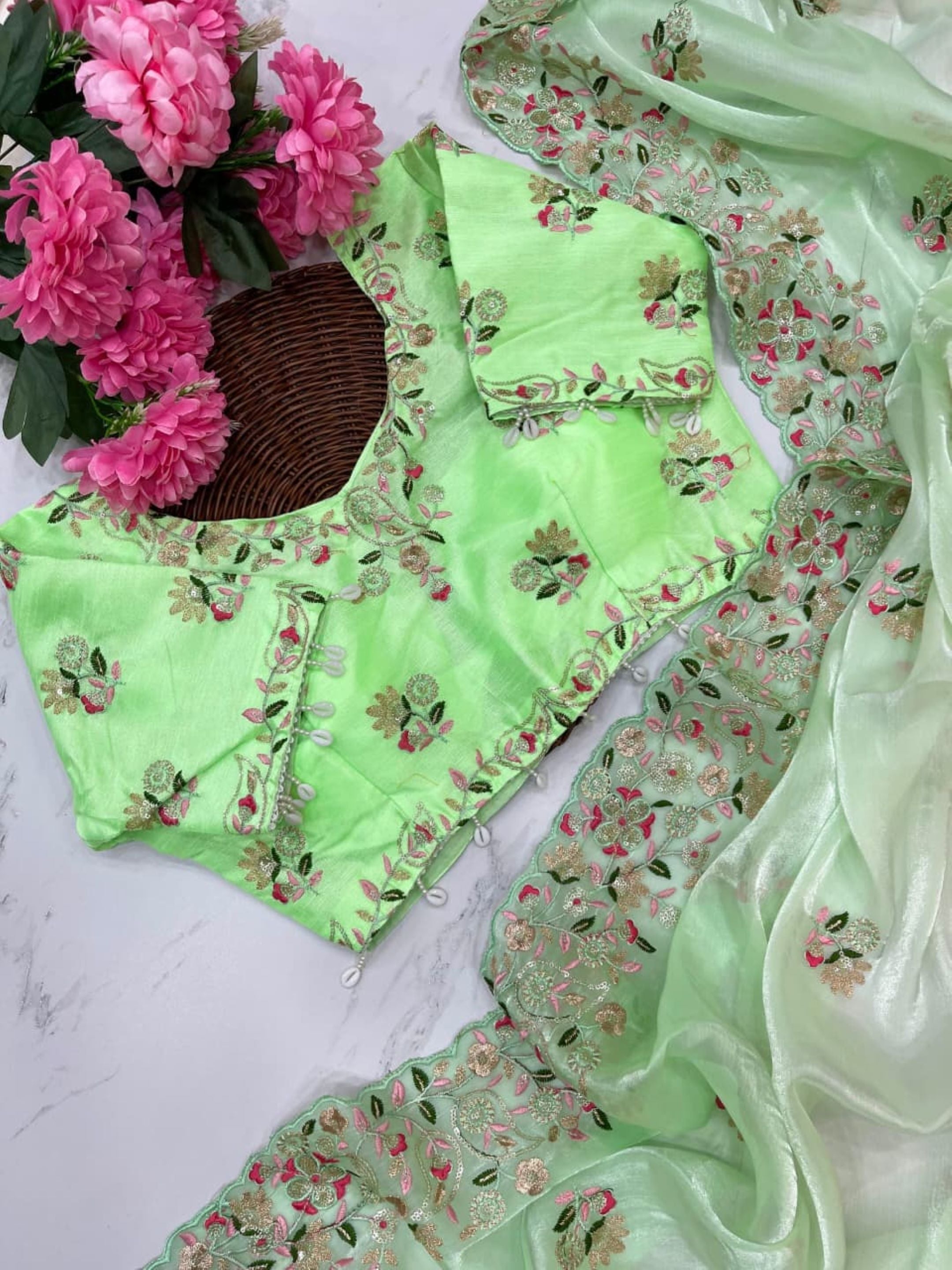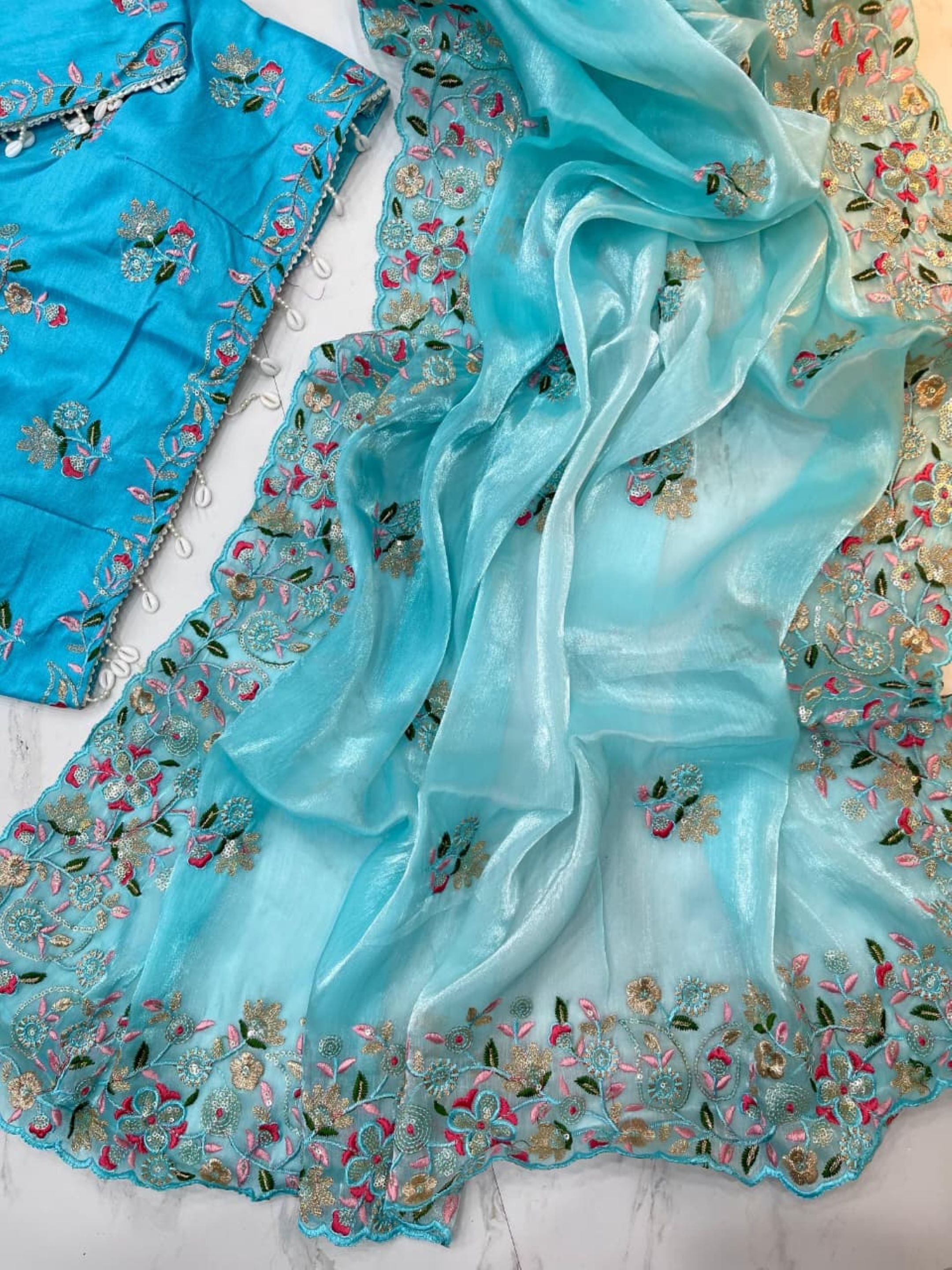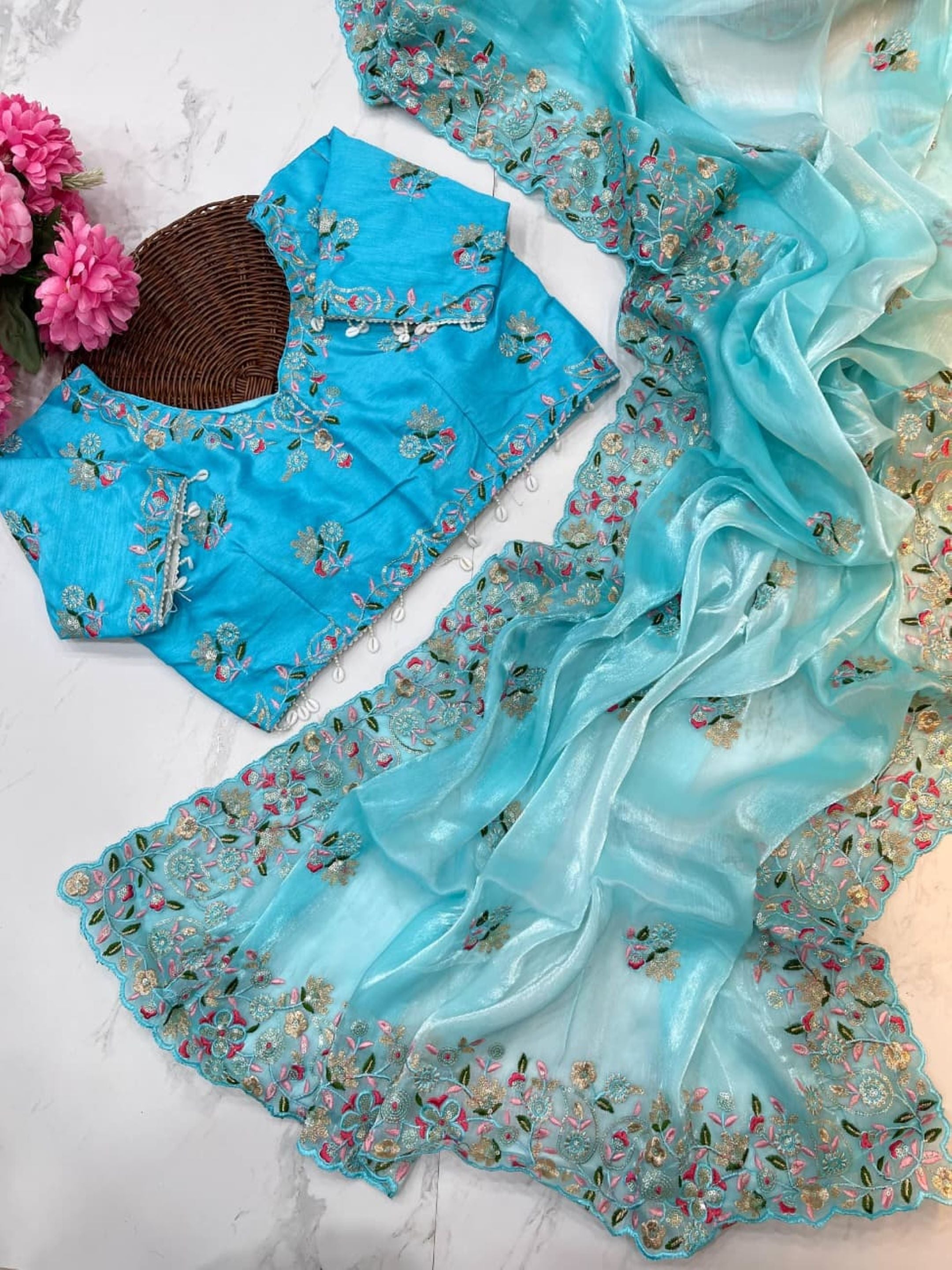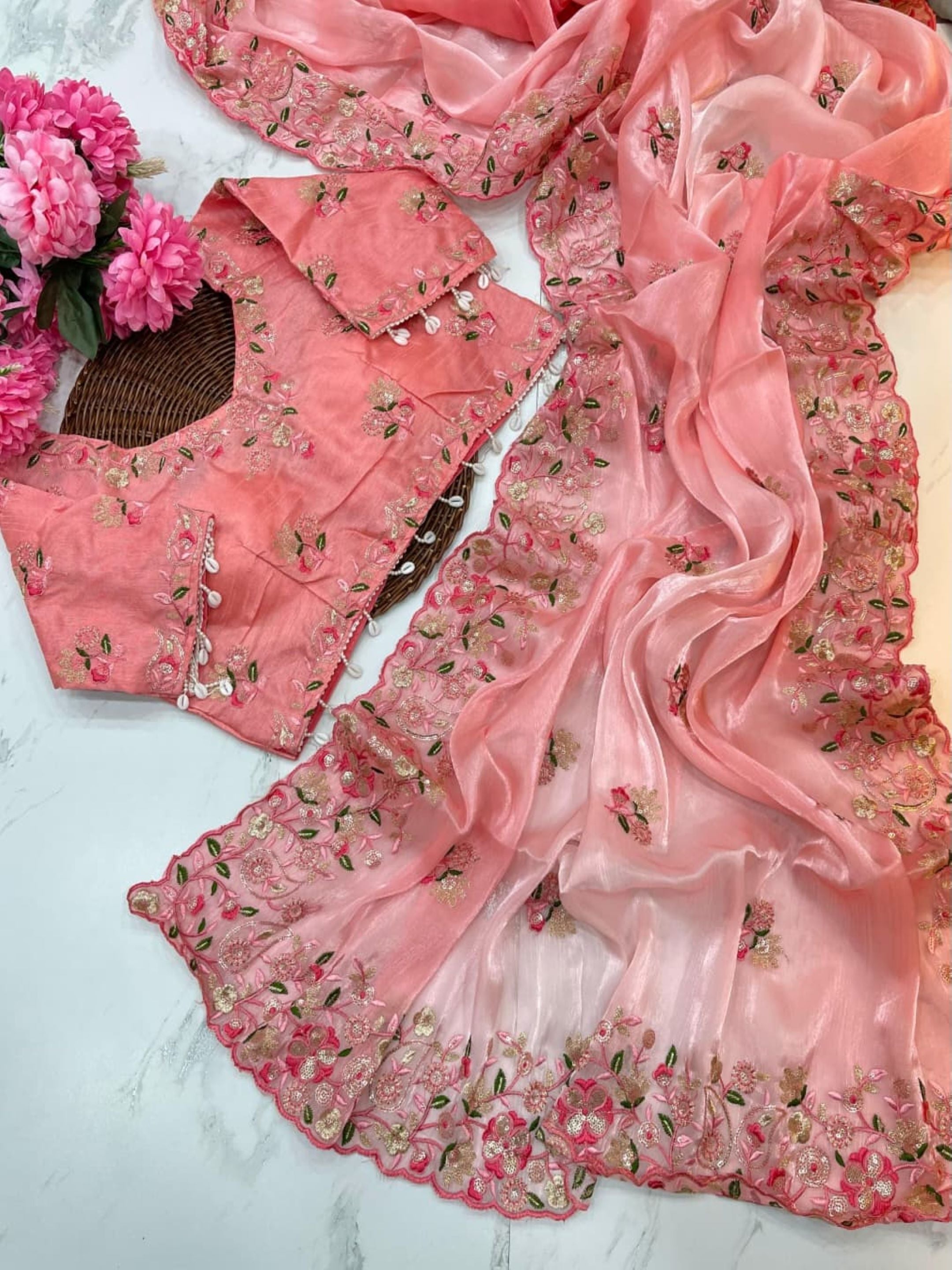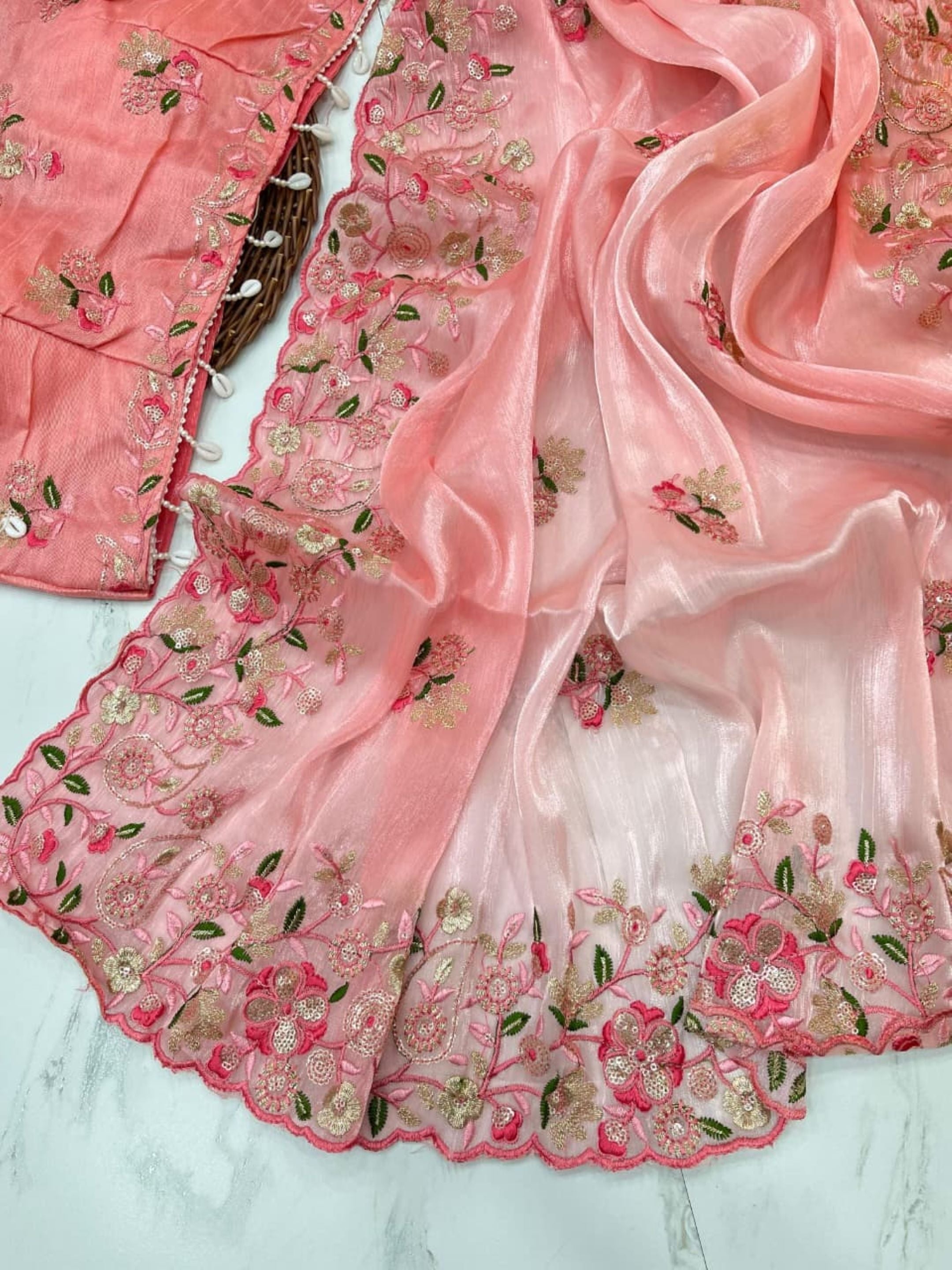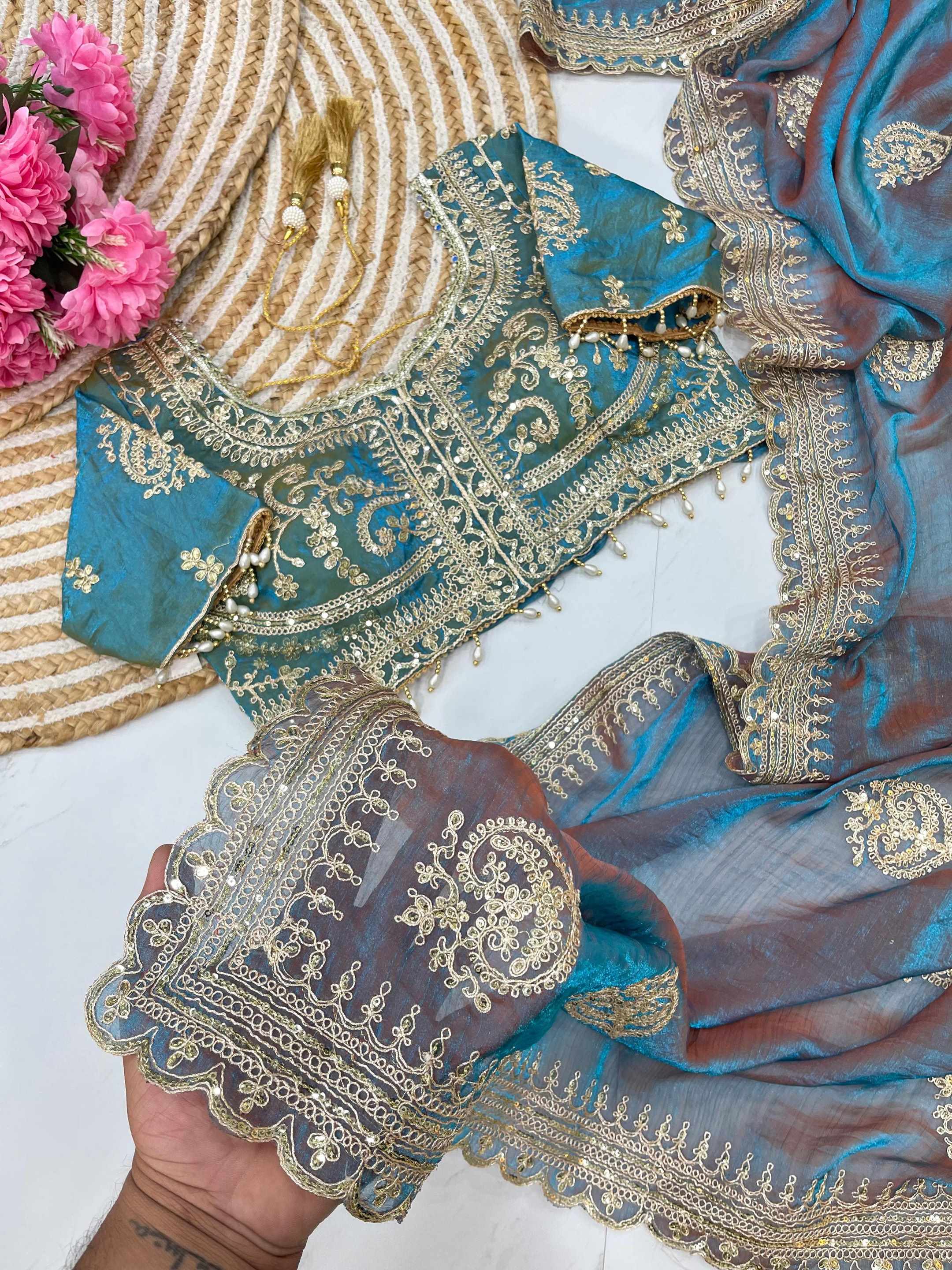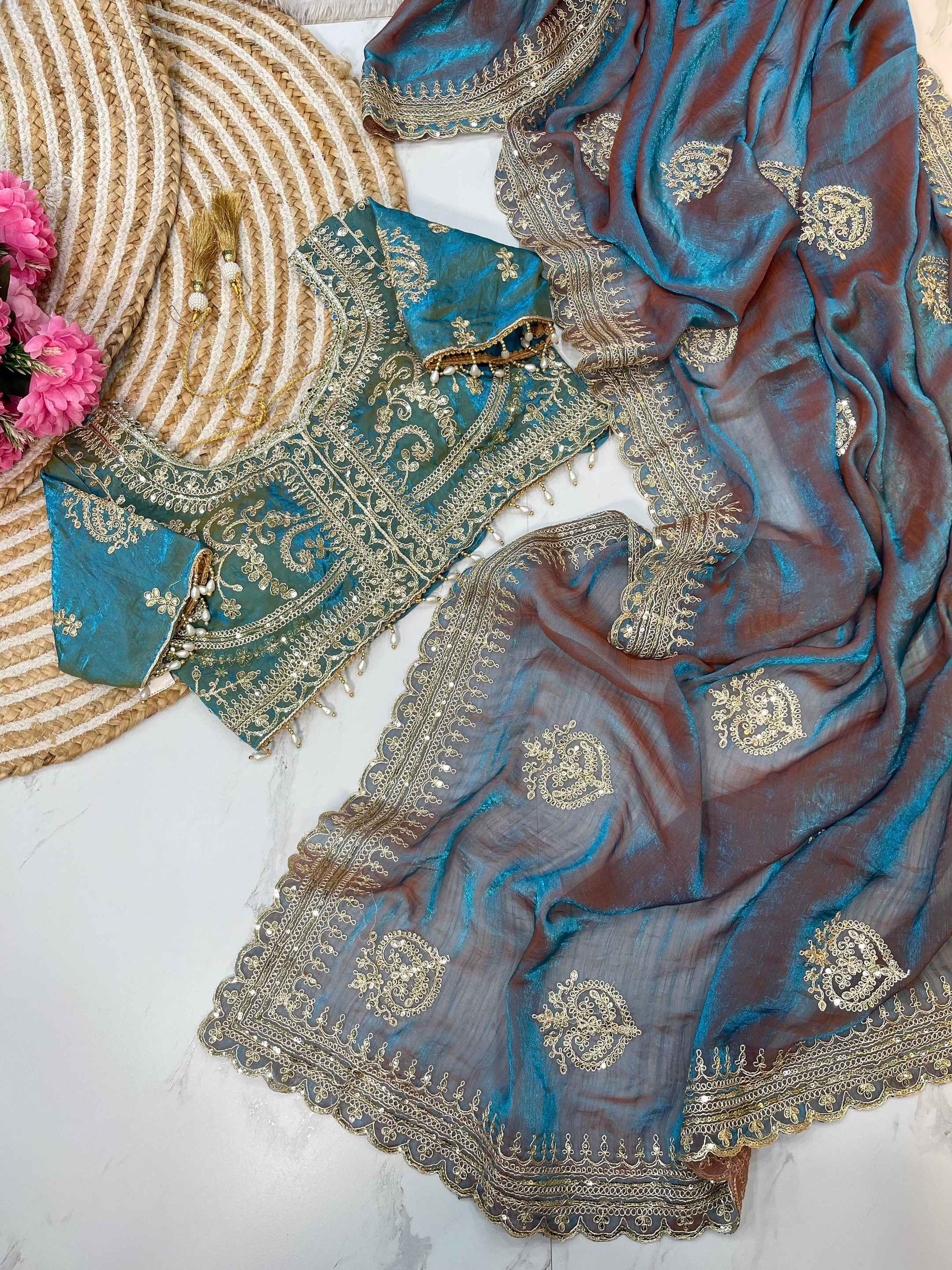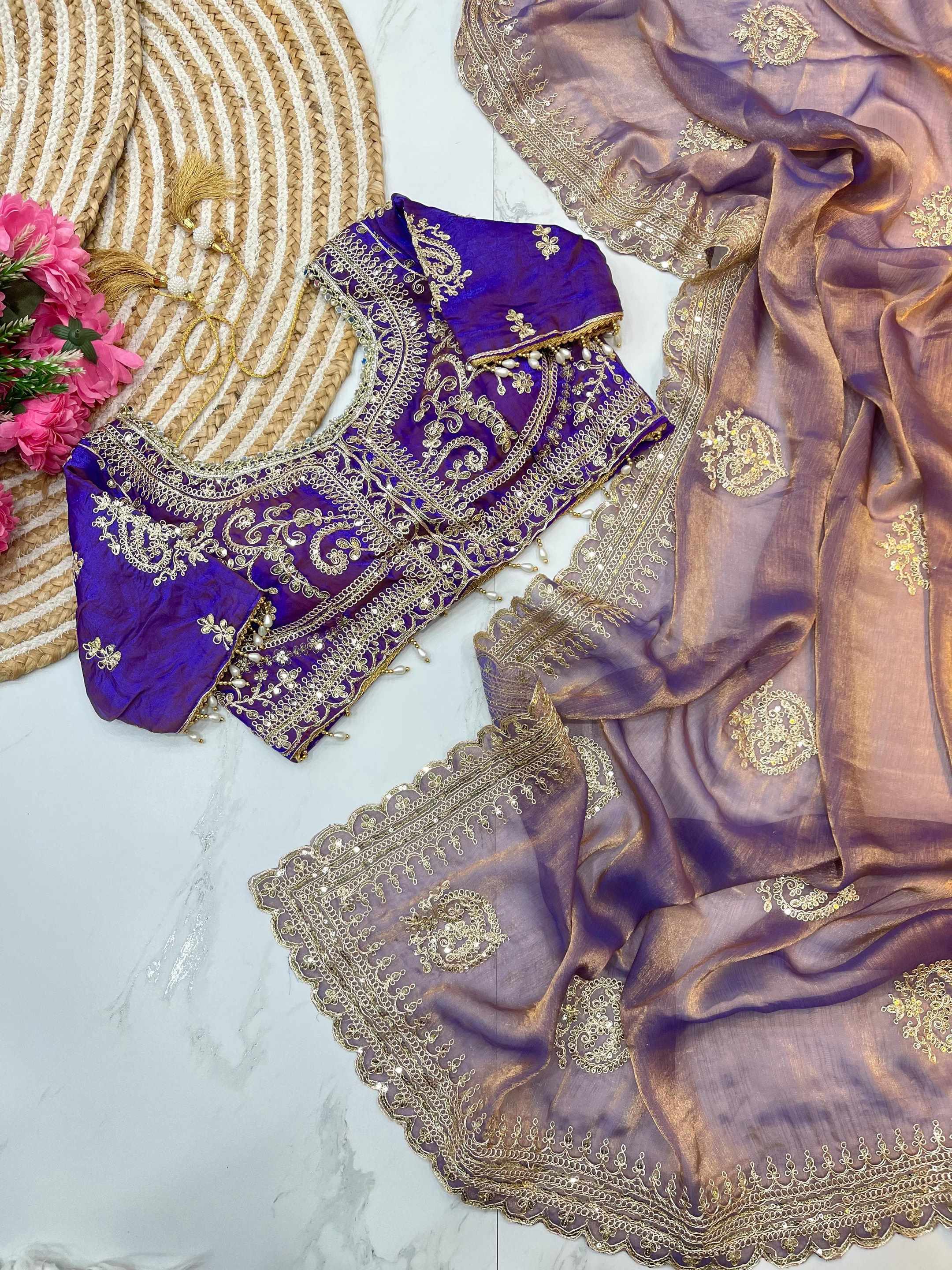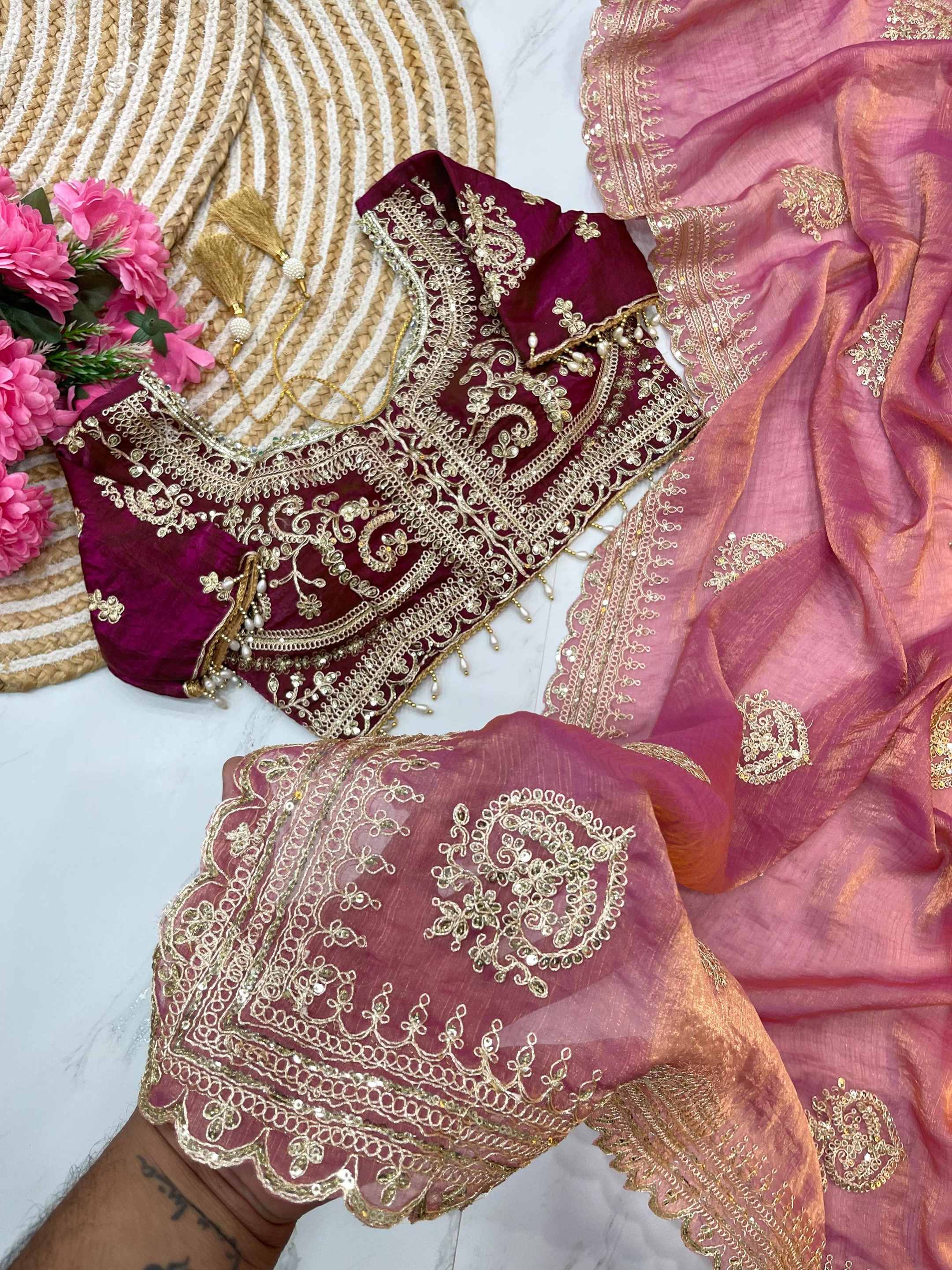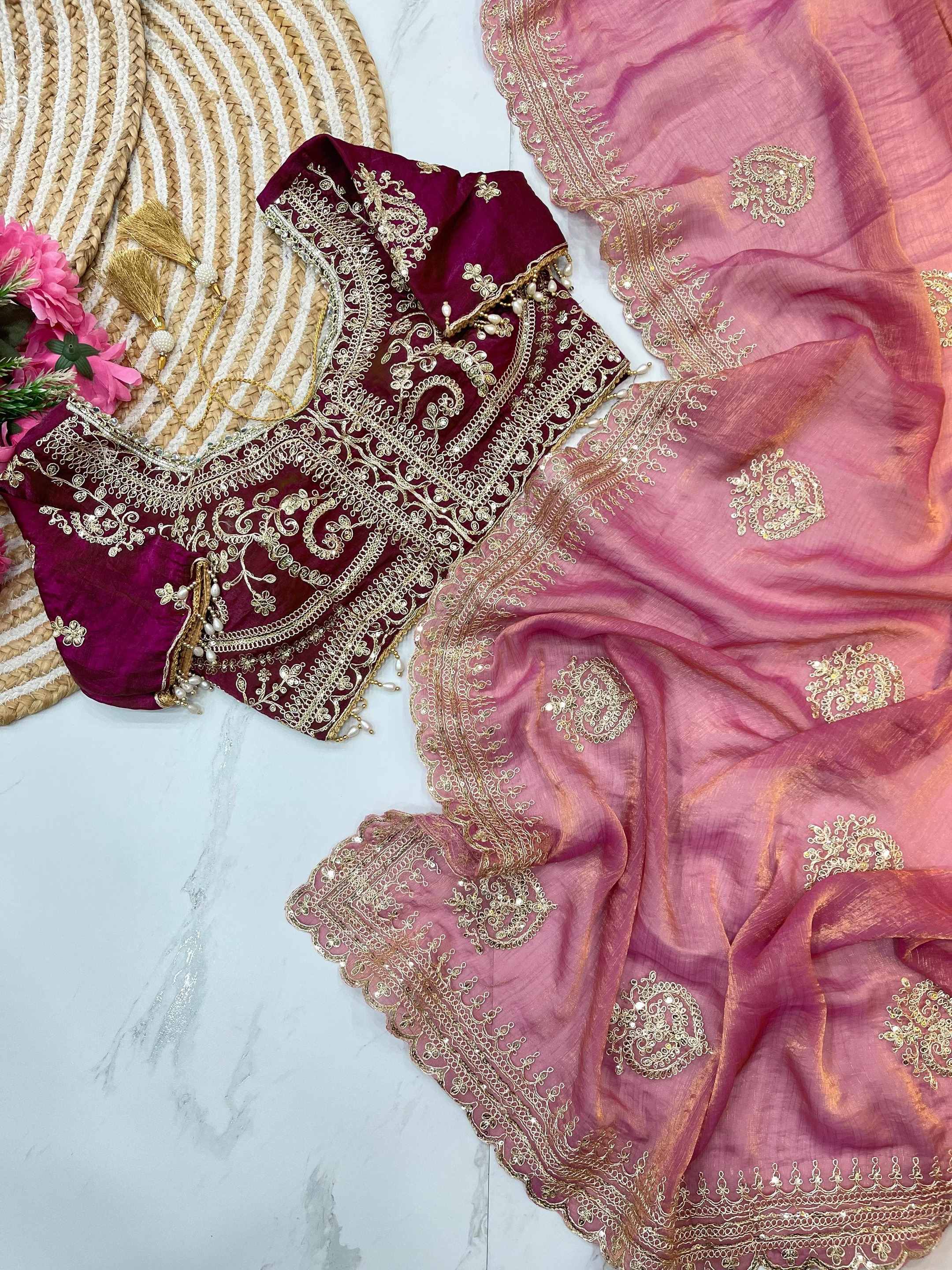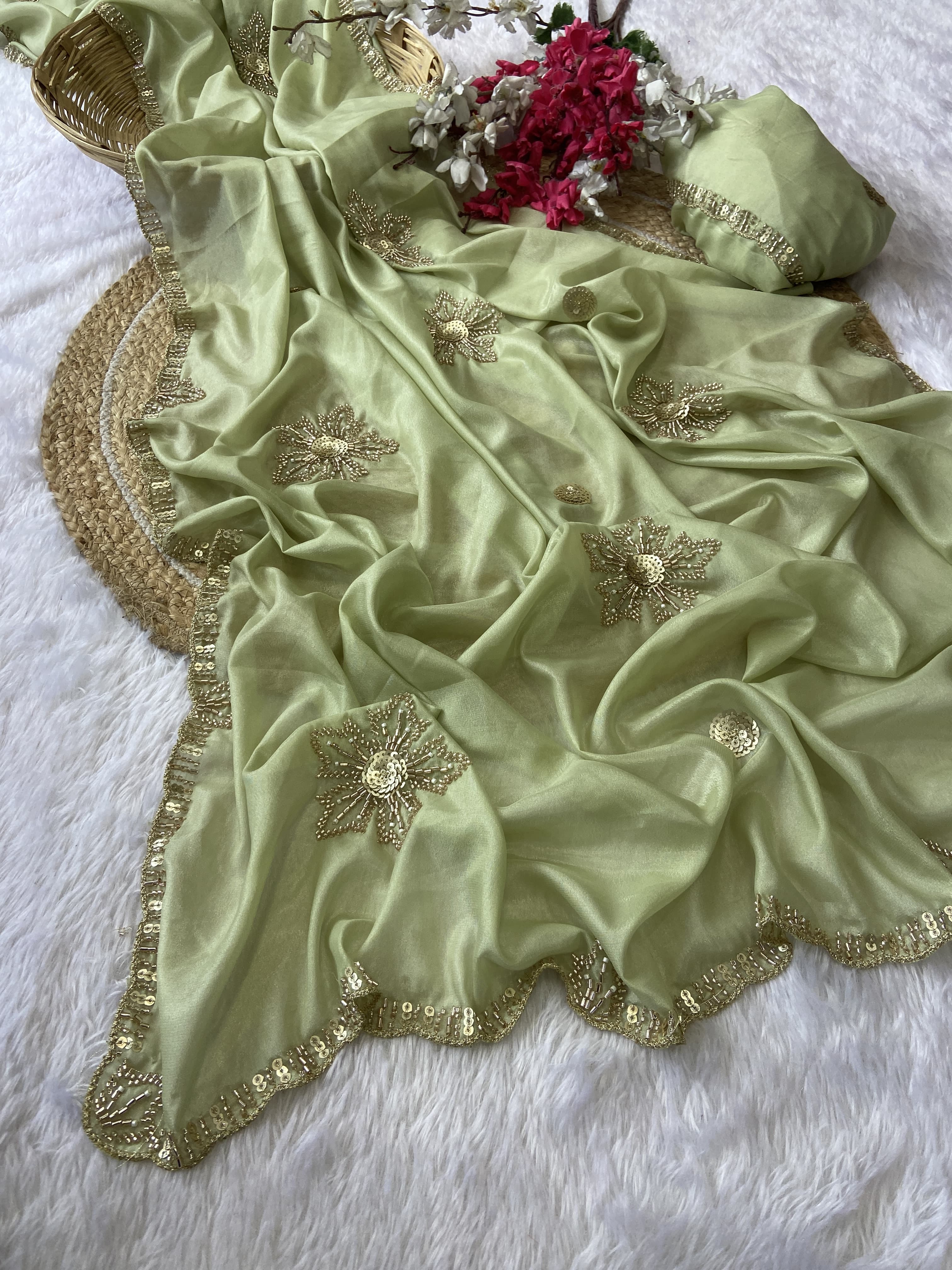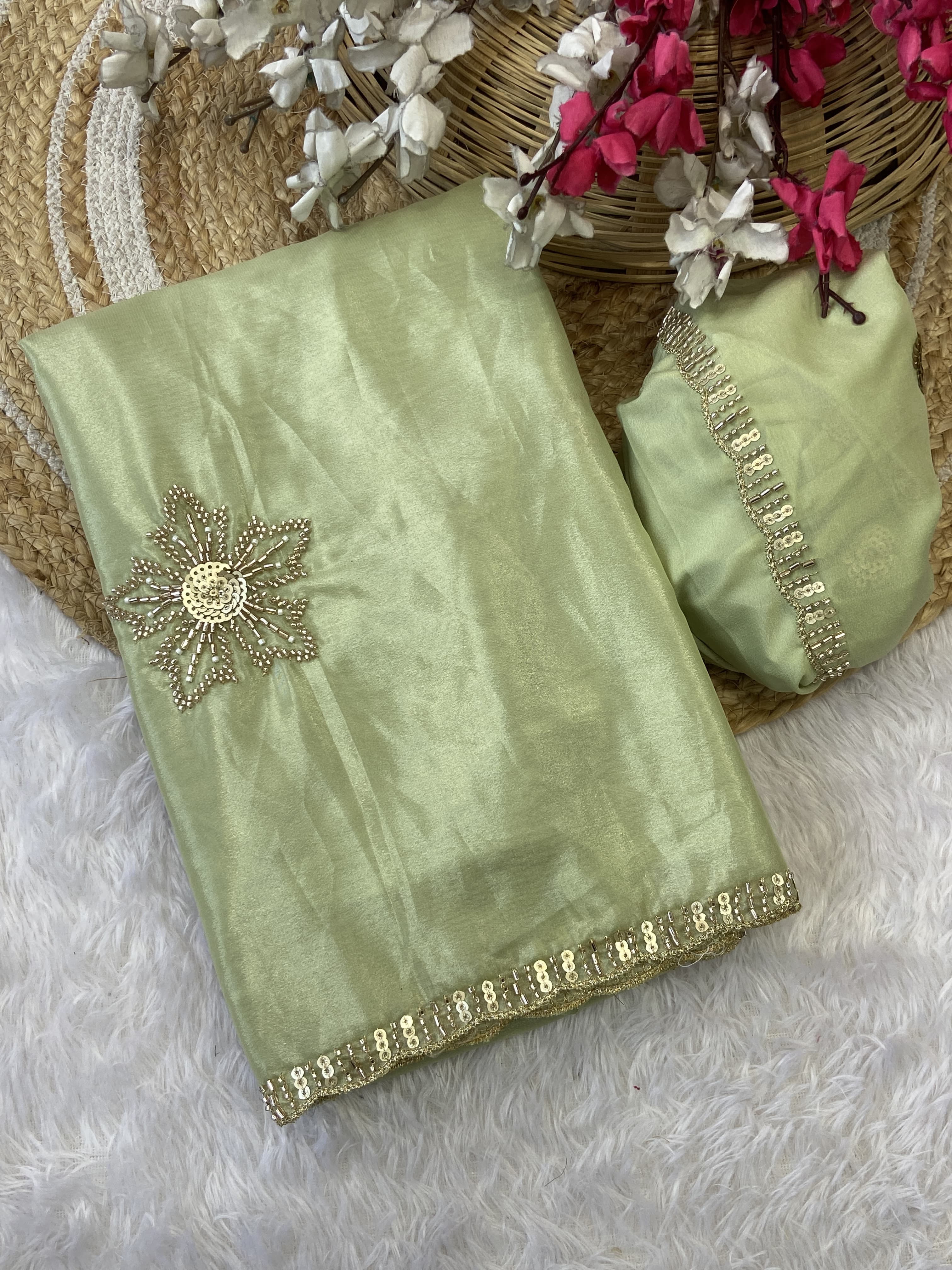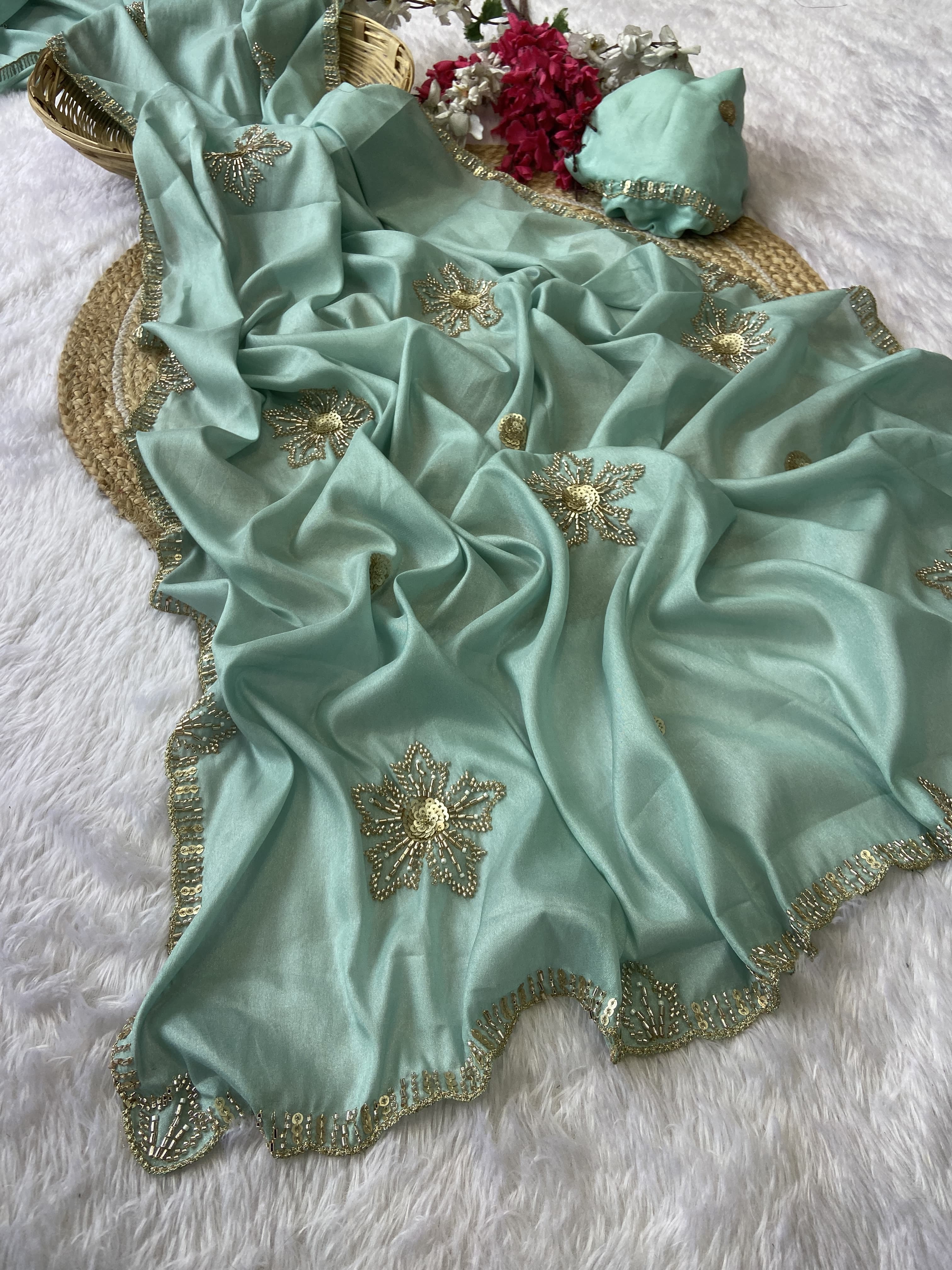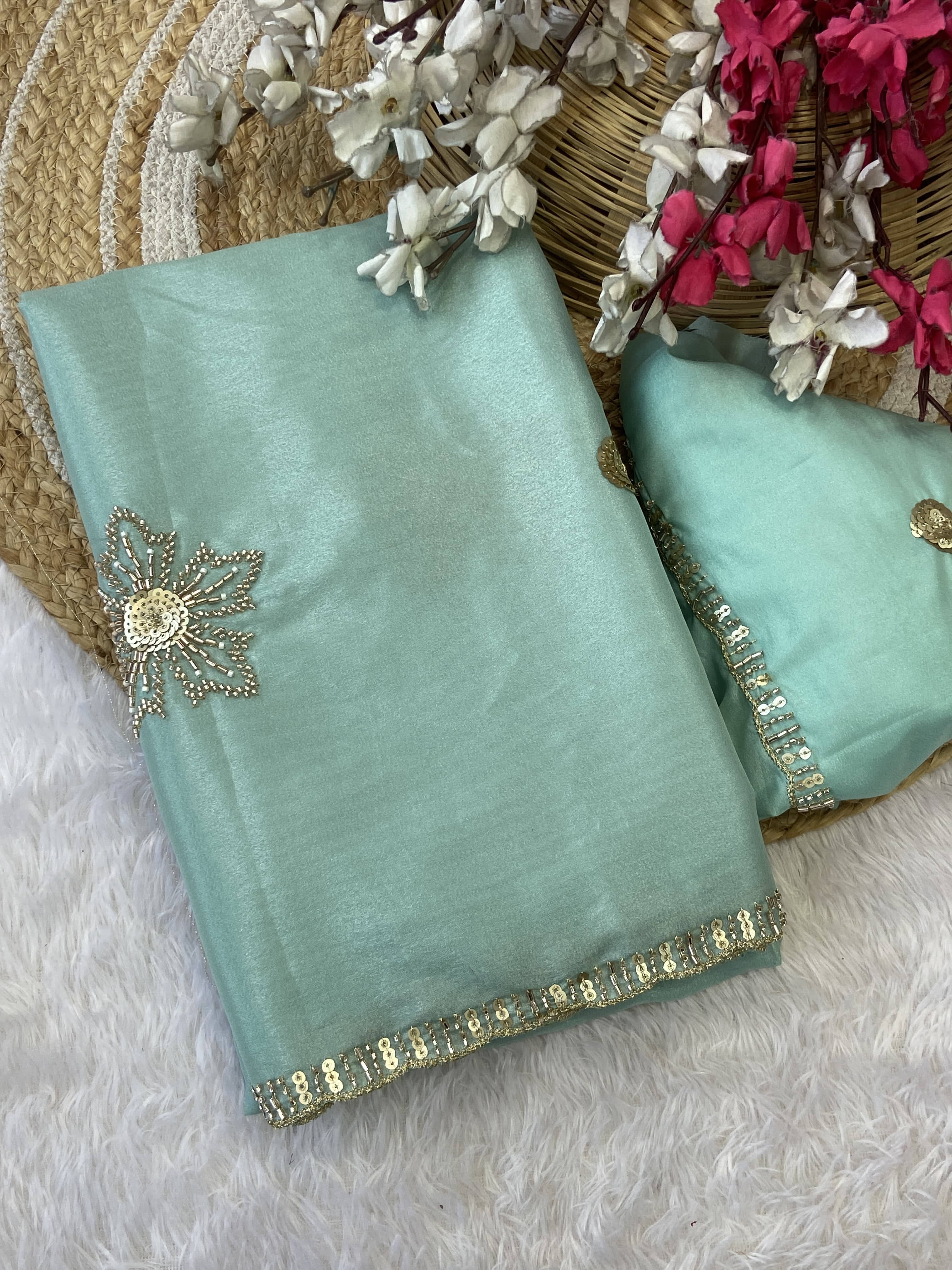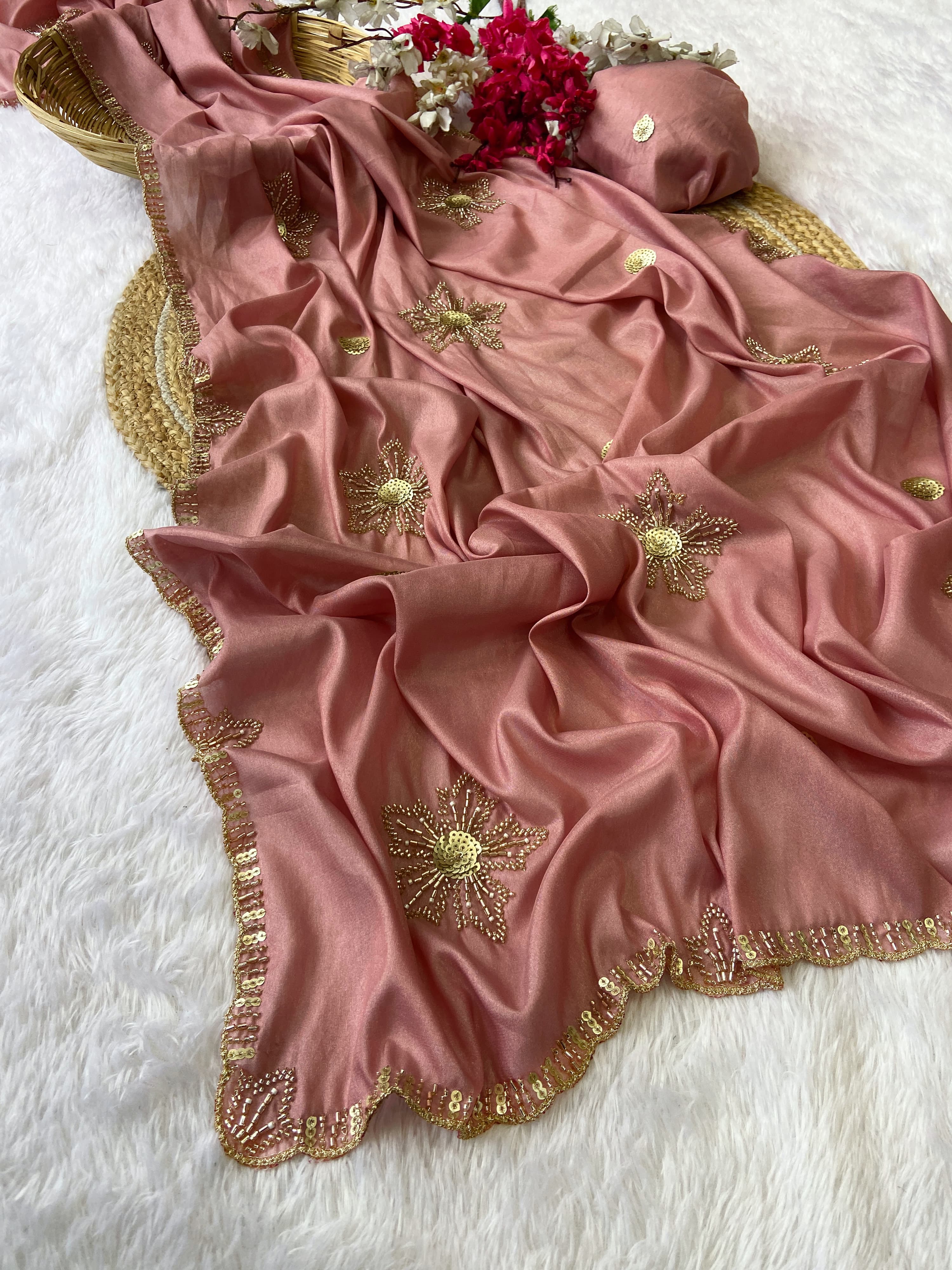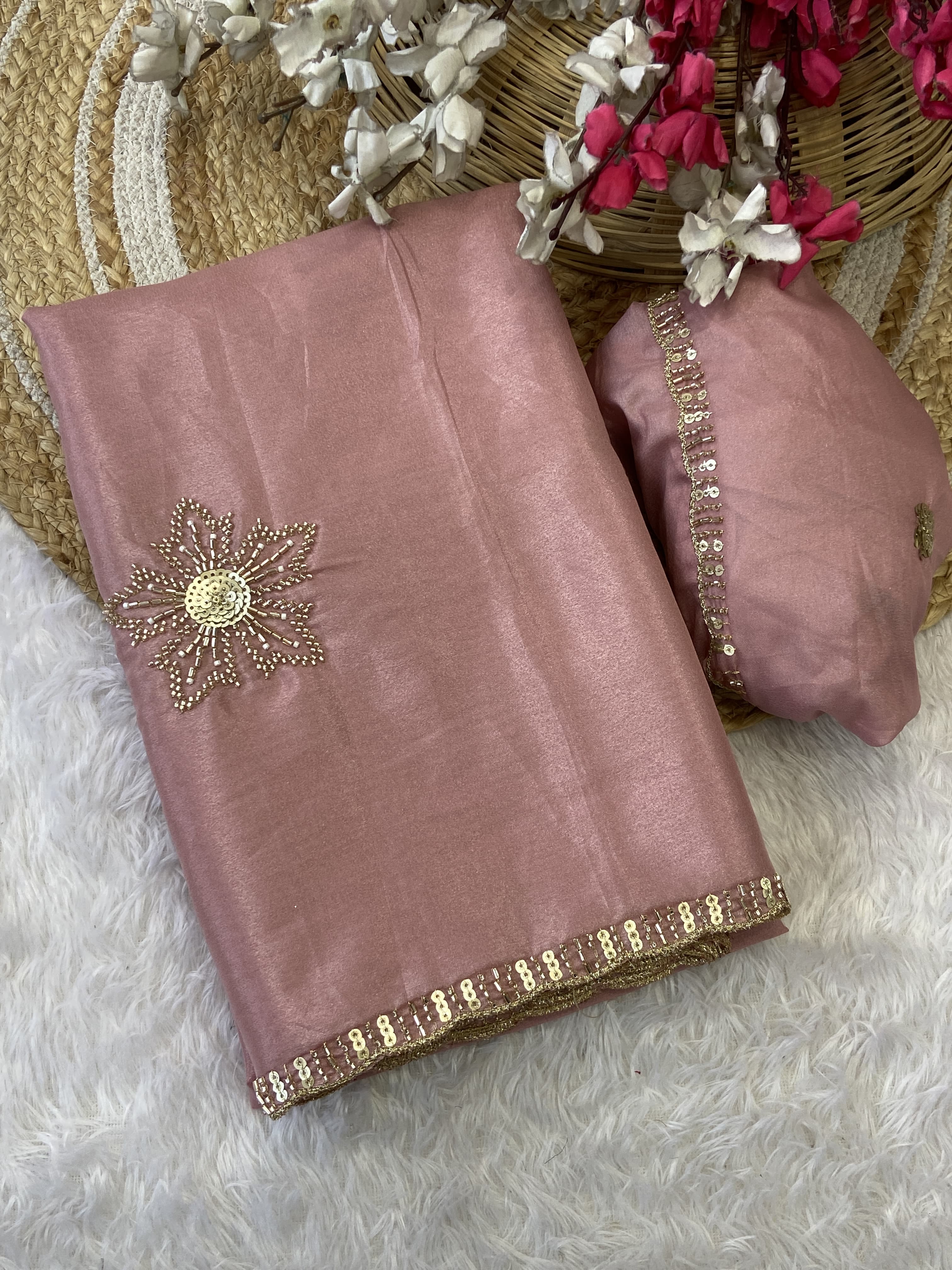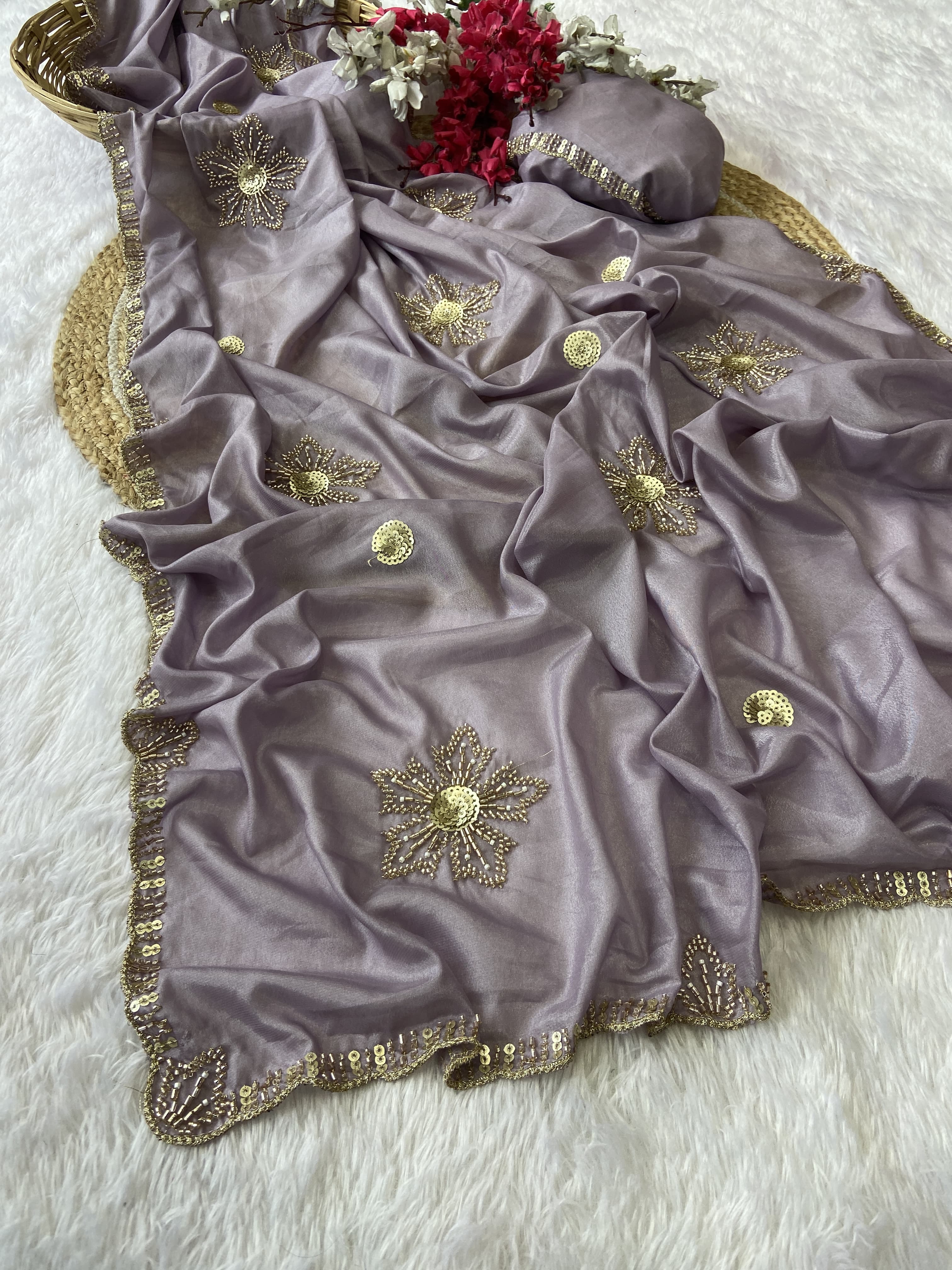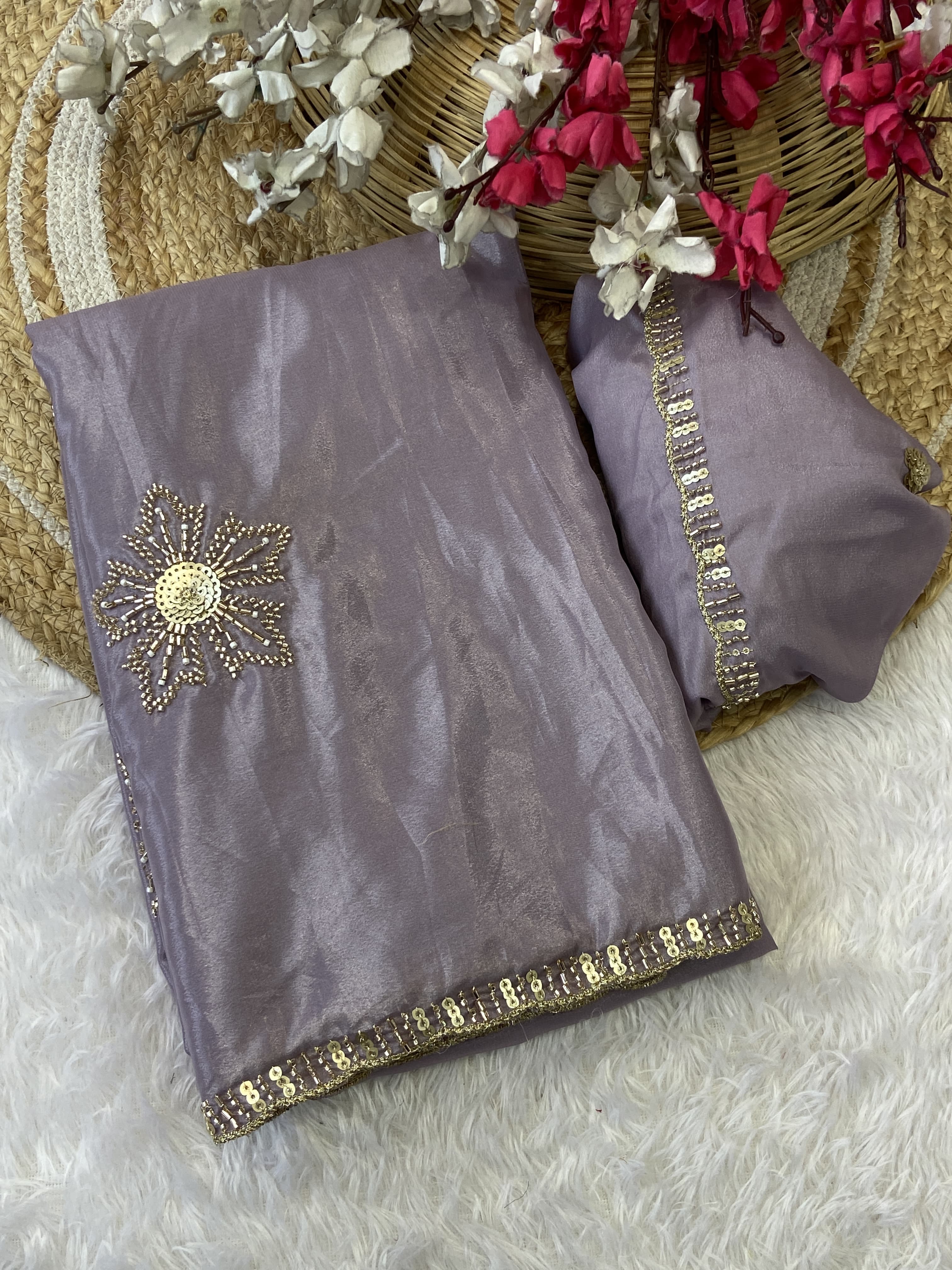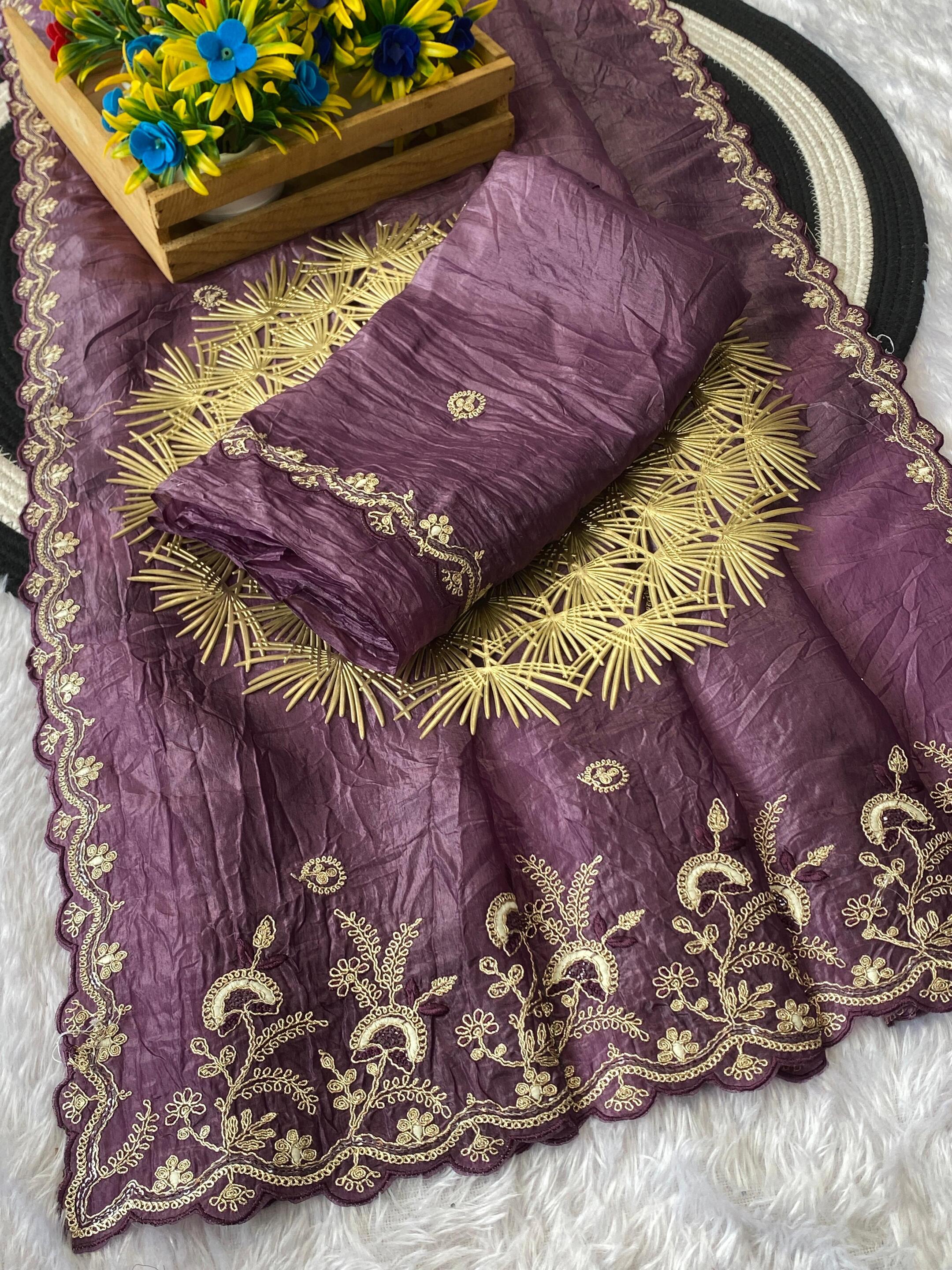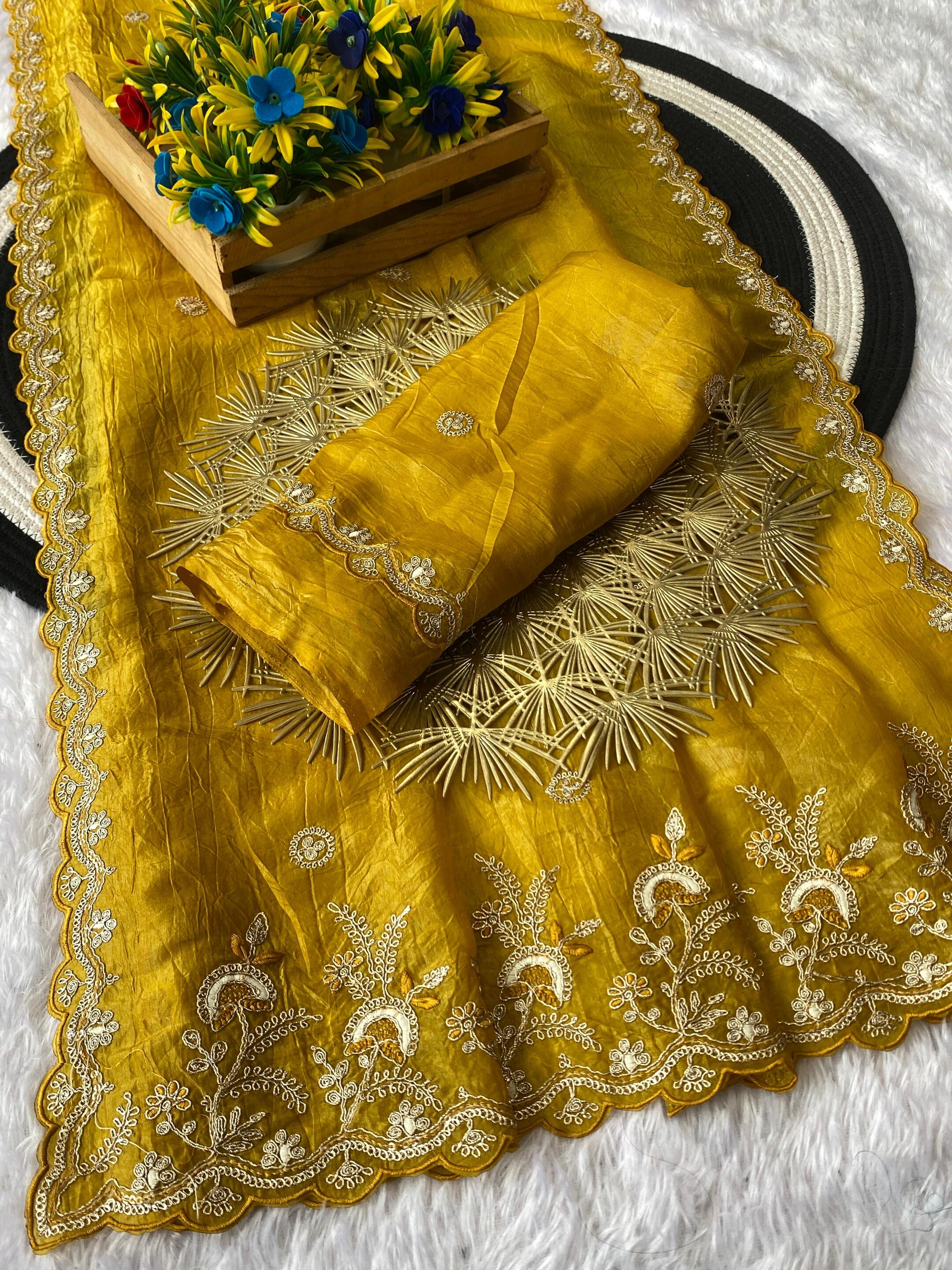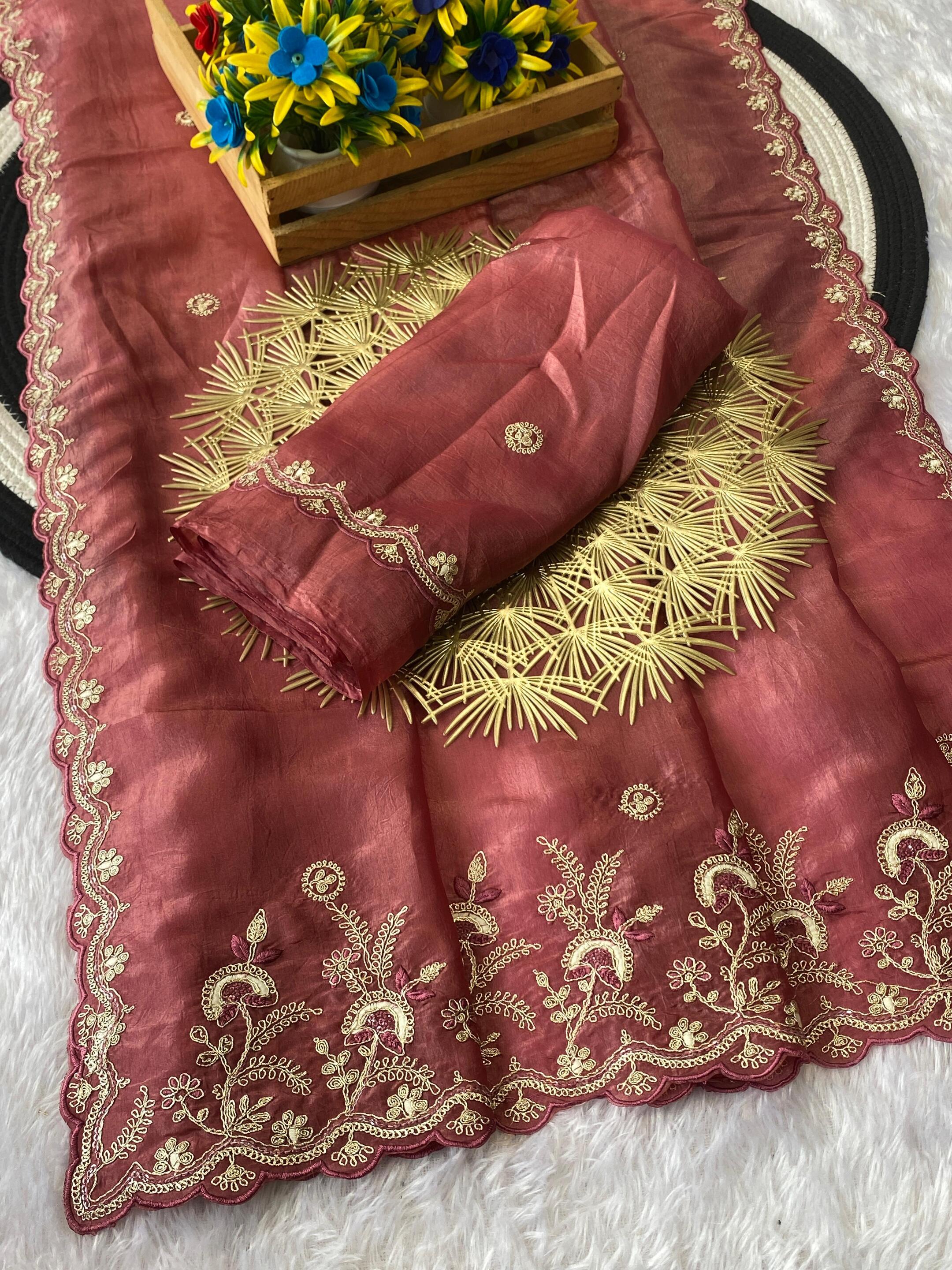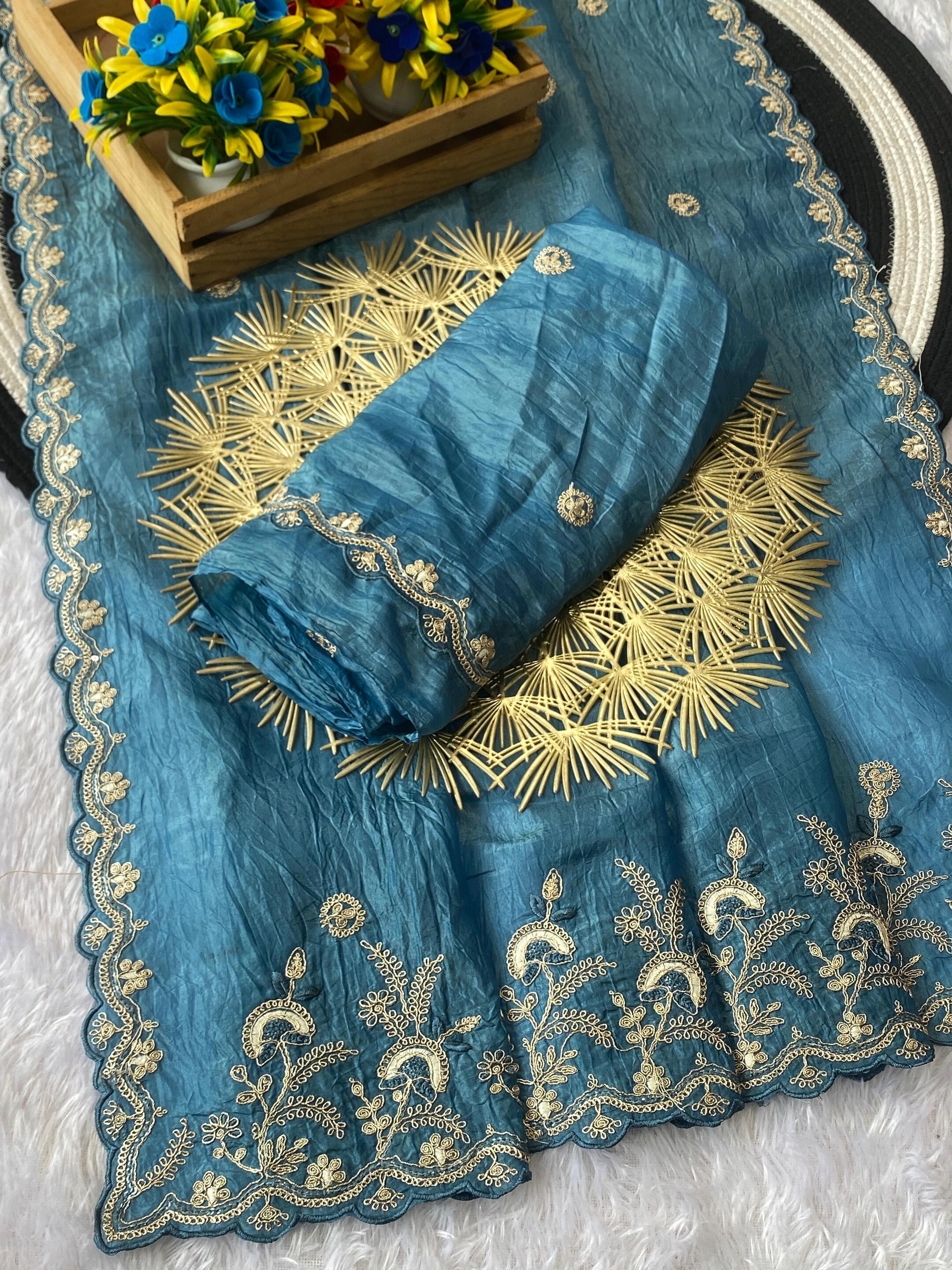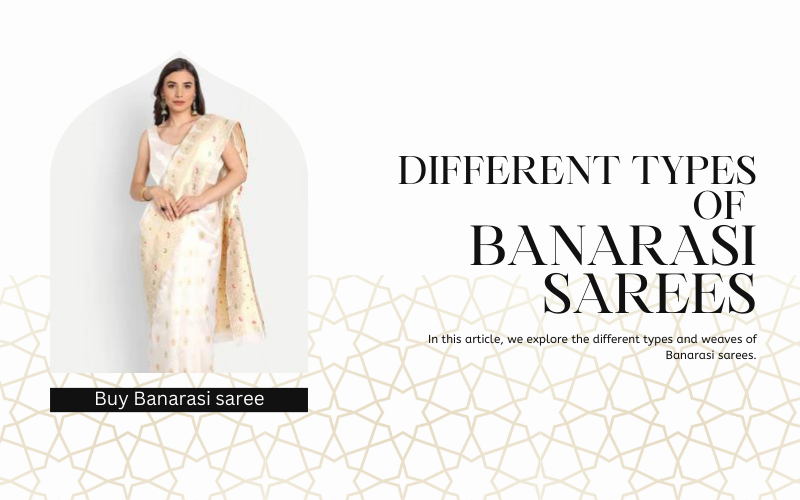
Different Types of Banarasi sarees

Sarees have their own exquisite world, which includes many different types and kinds of beautiful sarees that have been a vital part of Indian heritage and culture for centuries.
In this article, we explore the different types and weaves of Banarasi sarees.
Banarasi sarees are mainly known for their luxury and detailed craftsmanship. These first originated from the ancient area of Uttar Pradesh, which is Banaras and is presently known as Varanasi. Banarasi sarees have been a part of Indian culture and traditions since the 16th century, during the Mugal era, and their popularity has grown over time.
Formerly, artists used to make these sarees by hand, but later on, with the development of instruments and machines, banarasi sarees could be made quickly. Banarasi sarees are unique, and each piece of them is a masterpiece. This kind of saree has never missed a chance to mesmerize women across generations with its elegance and style.
Types of Banarasi sarees
Banarasi sarees come in a variety of types; each has its own unique characteristics and designs. Let's take a closer look at the different types of Banarasi sarees.
Banarasi Silk Saree
The banarasi silk saree is at the top of splendor and impressiveness. This type of saree is woven with pure silk material, which is the main reason behind its smooth and lustrous texture. Traditional Indian designs, nature, and Mughal architecture are generally patterned and elaborated in these sarees.
The unique technique used for weaving this saree is brocade weaving, in which skilled artists make beautiful designs on the fabric using silk threads along with weft threads. This technique later on gives a three dimensional effect to the saree. These sarees are available in a variety of colours and shades, such as vibrants, bold hues, subtles, or pastels.
Banarasi Georgette Saree
Georgette is a comparatively soft material; hence, banarasi georgette sarees offer a lighter and much more comfortable alternative to their silk counterparts. This type of banarasi saree is a fusion of two distinctive styles, which is banarasi sarees with georgette fabric.
The georgette fabric originated in the early 20th century, and the fancy-looking appearance of its fluidity and drape have made it a choice of modern saree enthusiasts, as it provides both style and comfort to those who wear it. The banarasi georgette sarees can be worn on special occasions and at weddings, as they give a regal and grand look. Apart from traditional roots, trying different styles of draping can also be done to make it look fashion-forward at informal parties.
Banarasi Organza Saree
The Banarasi organza sarees are known for their lightweight and translucent texture. These sarees are a combination of traditional Banarasi weaving and the sheer beauty of organza. Organza material is known for its delicate, translucent appearance, fine craftsmanship, intricate designs, ethereal appearance, and crisp texture.
The banarasi organza sarees are made in unique patterns, including zari work, floral motifs, traditional motifs, and paisleys. These patterns and designs are created by skilled designers and artists using unique handloom techniques. The artists use this handloom weaving technique to weave each thread with accuracy, precision, and expertise, resulting in a unique masterpiece.
Banarasi Dupion Silk Sarees
The banarasi dupion silk sarees are the luxury melody of tradition and opulence, meaning they have the two prestigious elements, which are the traditional and artistic banarasi weaving and the luxurious appeal of dupion silk.
Dupion silk is a type of raw silk that is a textured fabric with irregularities; thus, it gives a natural sheen and crisp texture to the saree. The banarasi dupion silk sarees have captivating designs such as jangla (jasmine), butidar (small woven motifs), shikargah (haunting scene), ambi (mango), and many more patterns.
The banarasi dupion silk sarees can be worn for any celebration, like weddings, festivals, or other special occasions. These sarees are so versatile and adaptive that, with time, they can be adapted to contemporary fashion trends, which makes them suitable for parties, cultural events, and formal gatherings as well.
Banarasi Katak Sarees
The banarasi katak sarees are woven from pure silk threads, which makes them smooth and lustrous. The used fabric turns into utmost beauty and grandeur.
The special technique used to weave this katak saree is the Katkadna technique, which is a method of weaving involving the mixing of pure silk and fine gold or silver threads to create intricate patterns on the fabric.
This type of zari work gives the saree a royal and luxurious appearance. These katal sarees are available in a variety of colours, especially the jewel tones, which are quite popular, such as, vibrant hues like deep red, emerald green, royal blue, opulent gold, and regal purple. The banarasi katak sarees can be worn on special and traditional occasions.
Banarasi Cutwork Tissue Saree
The banarasi cutwork tissue sarees are an exquisite and luxurious type of traditional banarasi sarees, as they are a combination of traditional banarasi weaving and delicate cutwork of the tissue fabric, resulting in a stunning and elegant ensemble.
Banarasi cutwork sarees showcase gorgeous patterns created by removing threads from the fabric, which creates the unique designs and motifs. The fabric used in these sarees is lightweight and translucent with a subtle shine, made from polyester or silk. The fusion of cutwork and brocade weaving techniques gives a visually appealing look.
The main attraction of these sarees is the tissue fabric, which adds the main charm and a contemporary touch to the traditional banarasi saree. The colour variations of the banarasi cutwork tissue sarees range from rich and vibrant hues to soft pastels such as regal purple, emerald green, deep maroon, and shades of gold or silver.
Banarasi Jamdani Saree
The banarasi jamdani sarees are popular for their feather-light texture. These sarees have floral designs, paisley patterns, traditional motifs like birds and animals, and geometric patterns woven into the fabric, which adds an elegance to the saree.
These banarasi jamdani sarees are made using the weft technique, which is the method of adding colourful and contrasting threads to the weft while weaving the fabric.
This weft technique is done by hand, making each saree a piece of love and skill. The banarasi jamdani sarees are suitable for various types of occasions, from weddings to formal gatherings.
FAQs
Q: What are the different types of Banarasi sarees?
A: There are plenty of Banarasi sarees, including Georgette Banarasi, Pure Silk Banarasi, Organza Banarasi, Jamdani Banarasi, and Banarasi Cutwork Tissue saree. Each of these types has its own unique characteristics and beauty.
Q: Can Banarasi sarees be worn for casual and informal occasions?
A: Yes, Banarasi sarees come in a variety of fabrics, designs, and patterns, which make them suitable for formal as well as informal occasions. Lighter-weight kinds like Organza and Georgette Banarasi sarees are best to wear on casual occasions.
Q: Are Banarasi sarees expensive?
A; As the Banarasi sarees are handwoven and delicately designed, they are quite expensive. The material and fabric used in Banarasi sarees are of premium quality; hence, the cost of these sarees is a little high.
Q: What is unique about Organza Banarasi sarees?
A: The Organza Banarasi sarees are lightweight and have a smooth texture, even compared to pure silk. They have geometric and floral motif patterns on them, which make them look more adorable and ideal for formal events.
Q: How can I identify authentic Banarasi sarees?
A: The authentic Banarasi sarees have specific tags on them that show their authenticity. You can also check the quality of handwoven patterns, zari work, and silk quality to ensure the originality of the Banarasi saree.

